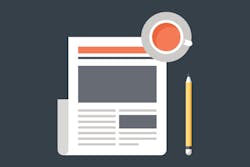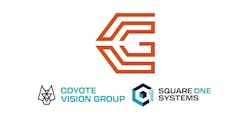Body shops have it tough. Your customers may only get in an accident once every 10 years, and if your shop isn’t in front of those customers on a regular basis, well, you’ll be forgotten.
Jon Swanson, former body shop owner and owner of Client Contacts, a company that helps small businesses retain and keep in touch with current and former customers, found that the best way to keep his clients top of mind with customers were shop newsletters. When he led the Columbus, Ohio, chapter of the Automotive Service Association (ASA), everyone wanted to jump on the newsletter bandwagon, as well.
While some shops take the email or Facebook route for their newsletters, Swanson says that, believe it or not, printed newsletters can still be incredibly effective. He concedes this might seem like backward thinking, and going this route is more expensive, but he thinks of it along the same lines as direct mail marketing: While it’s easy to delete an email or send it straight to spam, with physical mail, you guarantee that the recipient will rifle through it, even if it does end up in the trash.
Most of his clients, which include a mix of mechanical and collision shops, that have started the newsletters have stuck with it, with some shops sending 4,000–5,000 every quarter. On average, Swanson says that it costs $1 per newsletter, including postage and mailing. He admits this sounds expensive (especially compared to email newsletters) but he says to think of it this way: If you get one referral in 10 years from that person, that referral only cost you $30, whereas the repair was likely several thousand dollars.
To help your shop retain its current customers and obtain future referrals, Swanson shares his tips for how to build a customer-focused newsletter that’s sure to keep you remembered.
Before You Start: Understand the Basics
Swanson says that it’s generally best to send your newsletters out seasonally. For his clients, he sends them out four times per year, about every 90 days.
If you’re sending it out any more, people are going to get tired of receiving it. Regularity is also important. Once per year is not enough because it leaves too big of a time gap between each one.
In addition to following a schedule, you need to capture customer information, as your customer base is your newsletter base. Keep your database updated and have a way to keep track of families. You may have worked on five cars in the same family, he says, but sending five newsletters to the same household is a waste of money. Swanson recommends using online resources to cleanse your database and weed out duplicates or any customers that have moved out of the area. This is another simple way to reduce costs, he says.
Swanson offers an option to his clients where they can buy out a mailing list of customers who own vehicles the shop services most in its area.
Finally, you will want to calculate the ROI on these campaigns. While part of the appeal is creating top-of-mind awareness with customers, the simplest way to calculate ROI is through coupons. If you include an insert or a coupon in the newsletter, if a customer brings that in with them, it’s a simple way to tie that customer back to the newsletter’s success.
The Components
“I believe it should be engaging, it should be visually appealing. Information that people find entertaining and related to the automotive field,” Swanson says.
It’s crucial that the information you choose to include in your newsletter is related to your field and is not super generic. For example, Swanson says he’ll include a variety of topics.
He recommends a four-page newsletter, 11-by-17 inches, that will be folded in half and then in half again. You can have one newsletter and include two flyers and it won’t cost you additional postage, he says.
As far as content, Swanson has broken it down into the following sections:
“In the News”: This section includes any funny news stories related to travel or cars, even stories on future car technology. This section should be useful without being a heavy read, Swanson says. It should be engaging enough to have them sit down for five minutes and read it.
Jim Addison, general manager of Addison Auto Repair & Body Shop in Denver, has a very similar section in his email newsletter. Getting ideas from industry publications, Addison will hear something and decide to dig deeper if it piques his interest.
For example, with so much being written about safety features and autonomous cars, he’ll do research and write something up for the newsletter.
Recently, he wrote about a tire traction law in Colorado, which says that tires have to be in certain condition for mountain driving. One of his customers from out of town rented a vehicle and noticed the tires were bad. He pulled out the newsletter and got a free upgrade from the rental company.
Clips: For Swanson, this section includes short pearls of wisdom or little funny clips of jokes.
Jokes: There is usually at least one joke, he says. Providing humor is great for being memorable and lightens the content of the newsletter.
Addison also enjoys having some humor in his newsletter.
When it comes to your jokes, you have to be politically correct. It’s hard to come up with a clean joke, he says, but you have to be sensitive to the vast diversity of your audience. Keep the jokes clean and steer away from innuendos.
Two Articles: This section will be your largest in the newsletter. Swanson says that it will take up roughly a page and a half. The articles, which should be shorter, can be common information about vehicles or, for collision shops, you can include content about the customer’s right to choose a collision shop or what to do in the event of an accident.
In terms of content, Swanson finds it ridiculous when his accountant, for example, sends him tips on gardening, so don’t include nonsense in your newsletter. You do yourself a disservice if you give advice on something unrelated to your field. You’re the automotive expert, so show it.
Quick Tips: Short tips that can prove useful for the reader, such as driving tips.
Message From the Owner: This is a personal message from the owner thanking the customer for their loyalty, Swanson says.




